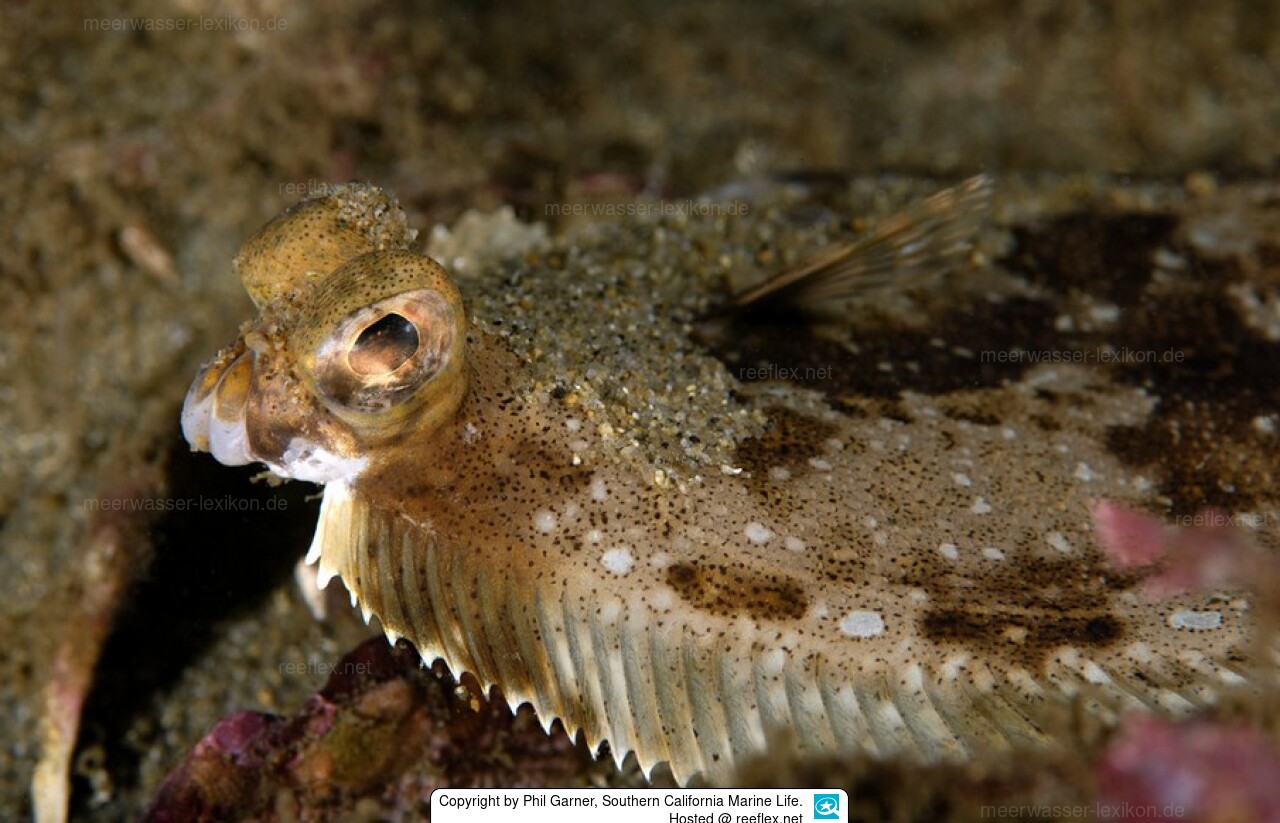Info
Pleuronichthys ritteri Starks & Morris, 1907
Plaice or right-eyed flounder (Pleuronectidae) are a family of flatfish. Both eyes are located on the right side of their body.
The spotted turbot (Pleuronichthys ritteri) is a species of flatfish from the Pleuronectidae family. It is a bottom-dwelling fish that lives at depths between 1 and 197 meters. Its natural habitat is the waters of the eastern Pacific, from Morro Bay in California to southern Baja California in Mexico.
The body is widest in the middle. The eyes are located on the right side of the head. The upper eye is relatively small (6.3–8.1% of body length); the interorbital space is relatively low, with no spines at either end. Pleuronichthys ritteri has a small, asymmetrical mouth. The lips have transverse folds. The color is brown to gray-brown with light speckles; usually a dark spot in the middle of the body, centered on the lateral line, two small dark spots at the base of the last rays of the dorsal and anal fins. The underside is white.
Pleuronichthys ritteri lives on soft bottoms, especially in bays.
Eponymy: Dr William Emerson Ritter (1856–1944) was an American marine biologist and tunicatologist
Plaice or right-eyed flounder (Pleuronectidae) are a family of flatfish. Both eyes are located on the right side of their body.
The spotted turbot (Pleuronichthys ritteri) is a species of flatfish from the Pleuronectidae family. It is a bottom-dwelling fish that lives at depths between 1 and 197 meters. Its natural habitat is the waters of the eastern Pacific, from Morro Bay in California to southern Baja California in Mexico.
The body is widest in the middle. The eyes are located on the right side of the head. The upper eye is relatively small (6.3–8.1% of body length); the interorbital space is relatively low, with no spines at either end. Pleuronichthys ritteri has a small, asymmetrical mouth. The lips have transverse folds. The color is brown to gray-brown with light speckles; usually a dark spot in the middle of the body, centered on the lateral line, two small dark spots at the base of the last rays of the dorsal and anal fins. The underside is white.
Pleuronichthys ritteri lives on soft bottoms, especially in bays.
Eponymy: Dr William Emerson Ritter (1856–1944) was an American marine biologist and tunicatologist







 Phil Garner, Southern California Marine Life, USA
Phil Garner, Southern California Marine Life, USA




